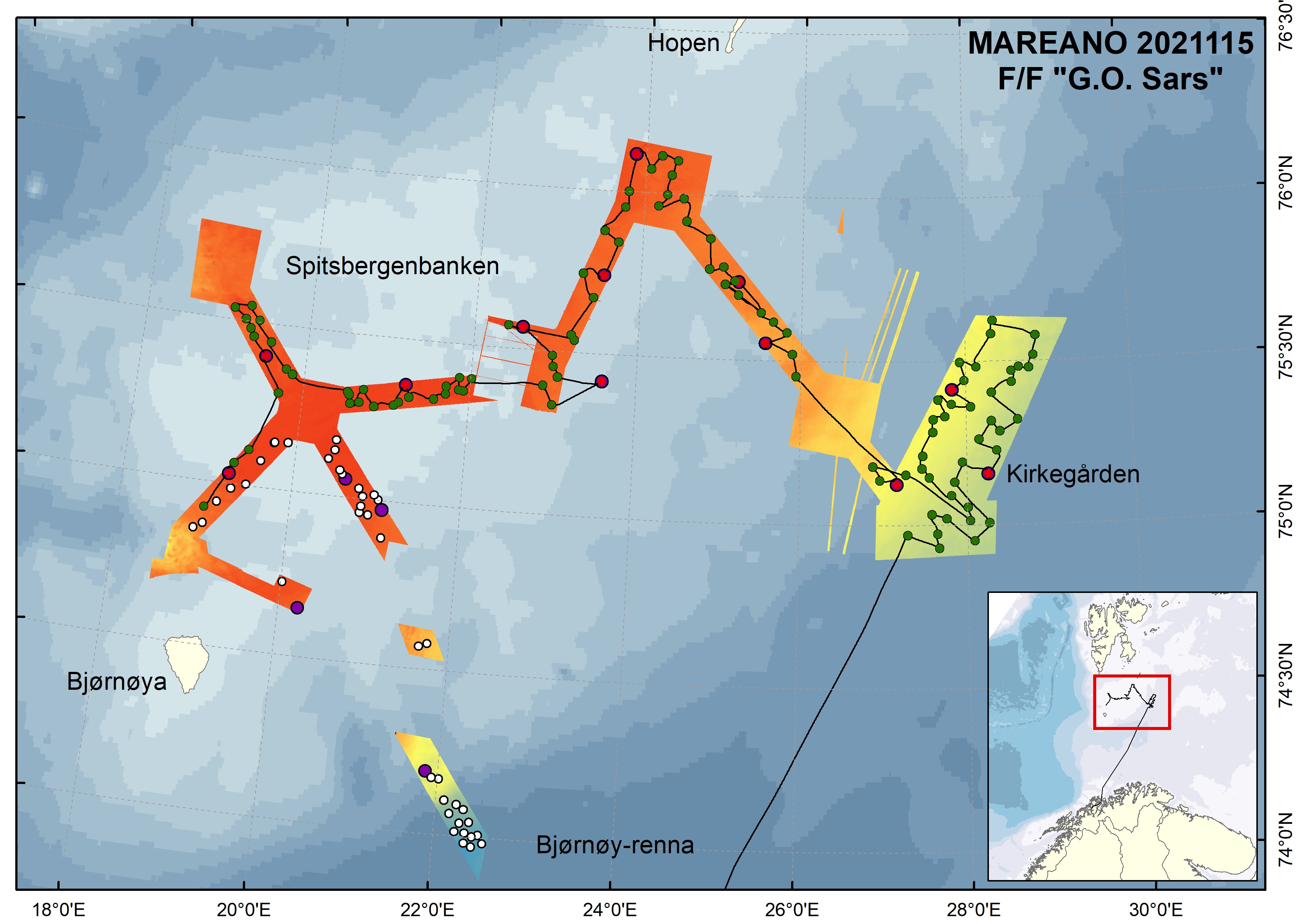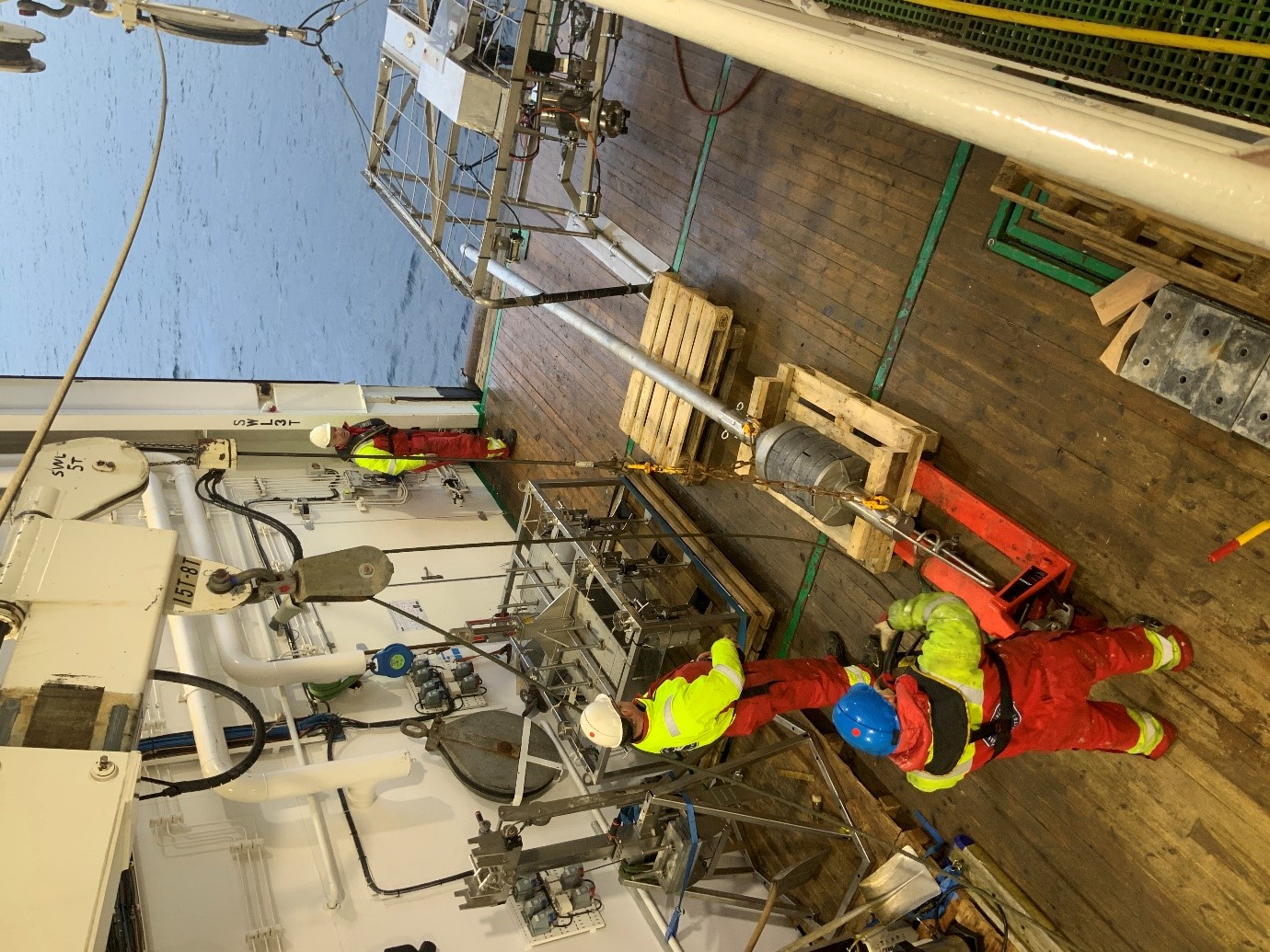The final sunset at sea. Photo: Valérie Bellec (NGU)
Photo: Mareano / NGUMareano expedition completed
Published: 06.10.2021 Updated: 02.11.2022
All of the planned samples and videos have been taken. After 20 days at sea, we are returning home laden down with data and seabed samples from 165 different locations. This means the Mareano Programme has now carried out 34 surveys of marine biology, geology and chemistry over the years, collecting data and sediment samples from a total of 240,000 km2 of the sea floor in the Barents Sea, Norwegian Sea and the coastal areas around Svalbard. It will now take one or two years’ work to finish going through the material and, for instance, modelling the biotopes and including them in the maps on www.mareano.no. Geological map products will be produced and published as early as 2022.
12 hours later we are half way to Nord-Fugløya, where we will head into sheltered waters for the final leg to Tromsø. Fortunately we finished our work on Spitsbergen Bank seven hours before our planned departure time, which allowed us to get away before the moderate gale that was forecast. The home journey wouldn’t have been much fun with high waves crashing over us and slowing us down.

The homeward leg has been used for cleaning up and packing, taking equipment apart and preparing it for transport to the Geological Survey of Norway and the Institute of Marine Research. In between all that, a birthday was celebrated with cake and the birthday song in two languages. Although we will soon reach land, there is still a lot of work to be done unloading and transporting our valuable samples.

For example, DNA samples from the sea floor, which Mareano will study further to help identify the species of benthic fauna, need to be moved from the ship’s ultra-low-temperature freezer (-80 °C) into another ultra-low-temperature freezer on land. Frozen sediment samples, which are to be analysed for pollutants and heavy metals, will be sent south still frozen. These samples are worth their weight in gold. There is no room for shortcuts, and everything has to be monitored carefully until they reach their destination safely.
Thank you to all those who have followed us on our journey!You will be able to follow us on another expedition next year, which will include us diving down into the deep ocean to test new methods of mapping the sea floor at depths of up to 4,000 metres. We are also planning an expedition to the seas north of Svalbard, to study the sea floor of the High Arctic, where little is known about the bottom types and resources.

